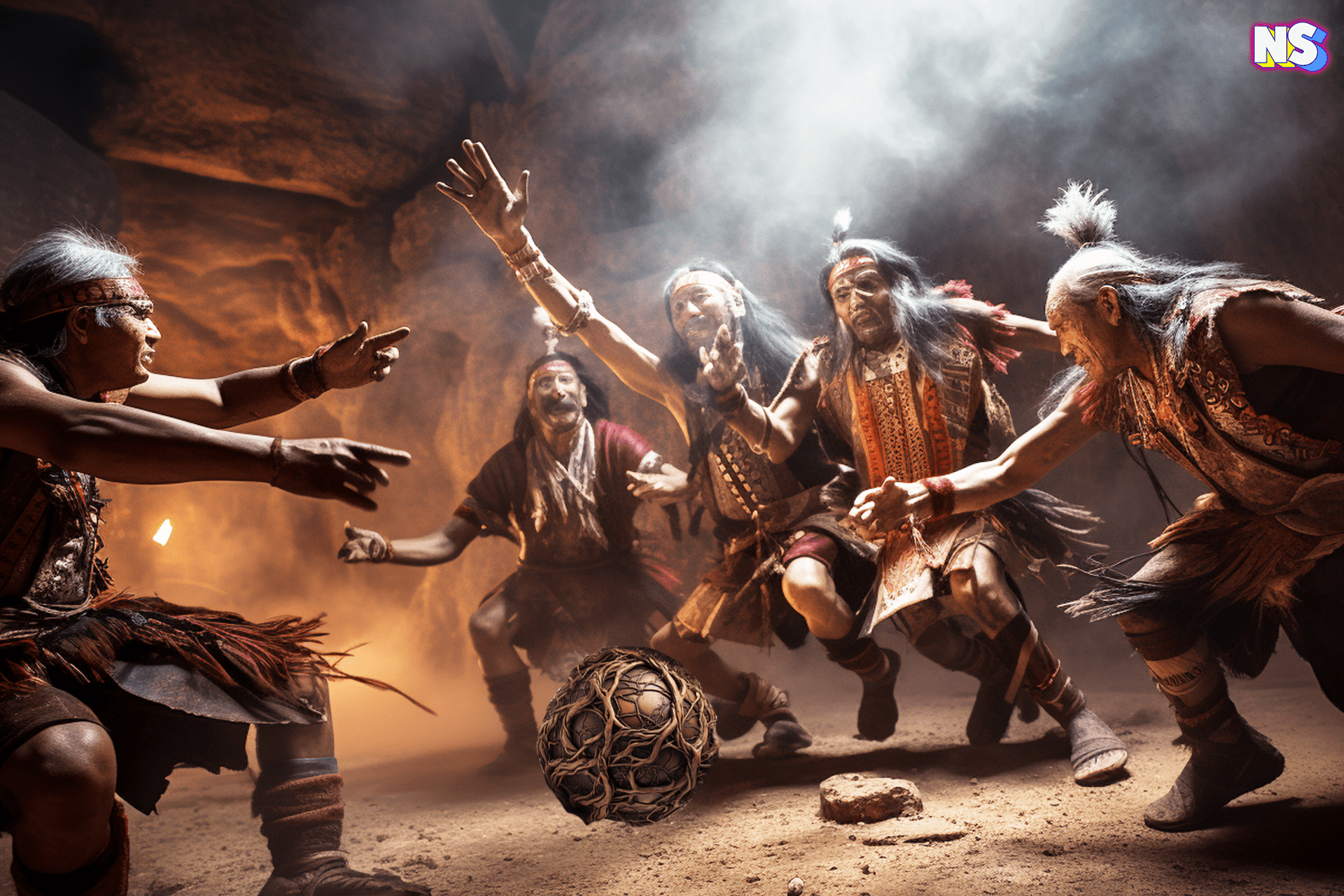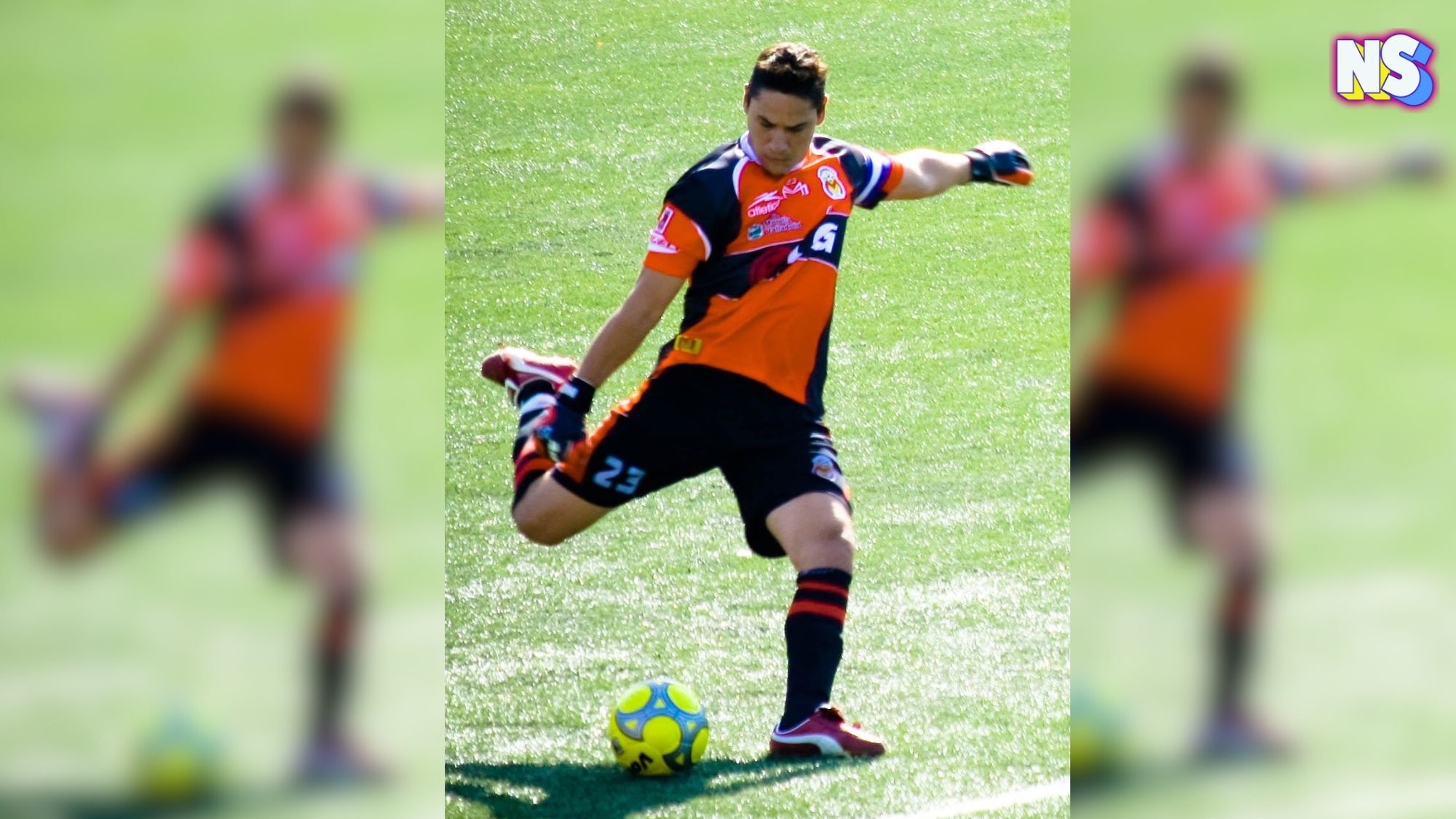While the prevailing notion attributes Charles Goodyear with creating rubber and the vulcanization process around 1840, this is not the whole story.
Mesoamerican societies, namely the Mayans, had already developed their own rubber-processing method by approximately 1600 BC. They did so by creating an elastic material by combining normal latex with various plant substances.
After extracting juice from vines to produce a form of elastic, they crafted items like “bouncy balls” for a physically intense ballgame played in purpose-built ballcourts.
Positioned at the base of religious sanctuaries, these ballcourts served as a tribute to their deities. Each court featured a spacious playing area and a stone loop mounted on one end.
Hence, the Mayan invented basketball. Kind of.
Playing Pok-A-Tok
Over 1000 years ago, the ancient Maya engaged in the ball game known as “Pok-A-Tok” with their rubber balls in the present-day areas of Cancun and Riviera Maya. Indications suggest that the Toltecs and Aztecs also participated in variations of this game, evident in the presence of game arenas, akin to stadiums, scattered across Mexico.
“Pok-A-Tok” resembled a fusion of football/soccer and basketball, played with a rubber ball. The primary objective was to maneuver the ball through a stone hoop at each end of the court. Notably, players were restricted to using their thighs and hips for passing and shooting, adding a unique dimension to the game.
“Although it was played by people from all levels of Maya society for fun, Pok-A-Tok was also used as a way to settle conflicts between warring groups and noblemen,” the Canadian Automobile Association (ACA) explained in a recent story on the ancient game.
“What’s more, recovered sources indicate that the losing side’s leader (and perhaps the whole team) was sometimes killed and sacrificed to the gods,” ACA further noted. “Those who have learned about Mayan culture know that death, the afterlife, and human sacrifice were seen as integral aspects of life.”
Yes, unlike modern day basketball, the Mayan game “Pok-A-Tok,” served purposes beyond recreation and religious observance—it functioned as a means to resolve conflicts between rival factions and nobility. And the stakes were always exceptionally high with the losing team’s leader or the entire team facing sacrifice to the gods.
Today, tourists can visit the Mayan basketball “arenas,” like The Great Ball Court at the Mayan city Chichen Itza, on the Yucatan Peninsula in Mexico. Cuban YouTuber Alita, of Alita’s World documents her visit in a recent video: “The team captain’s heart was ripped out after the game,” she explained, adding that the details of the sport and the arena are “incredible.”
5 Other Notable Inventions and Achievements of the Maya:
- Calendar: The Maya developed a highly sophisticated and accurate calendar system. They had multiple calendars, including the Tzolk’in (260-day sacred calendar) and the Haab’ (365-day solar calendar). The combination of these two calendars formed the Long Count, allowing them to record historical events and dates.
- Writing: The Maya created one of the most advanced writing systems in the pre-Columbian Americas. It consisted of hieroglyphs that were used for inscriptions on monuments, pottery, and bark paper books (codices). The Maya script has been deciphered to a considerable extent by modern scholars.
- The Zero: Mayan mathematics was highly advanced. They used a base-20 numeral system and had a concept of zero, which was a significant mathematical innovation.
- Astronomy: The Mayans accurately calculated the movements of the sun, moon, and planets. Structures like El Caracol at Chichen Itza served as astronomical observatories.
- Chocolate: The Maya were among the first Mesoamerican civilizations to cultivate and use cacao (the source of chocolate). They consumed chocolate as a beverage, often flavored with chili peppers and other spices.





